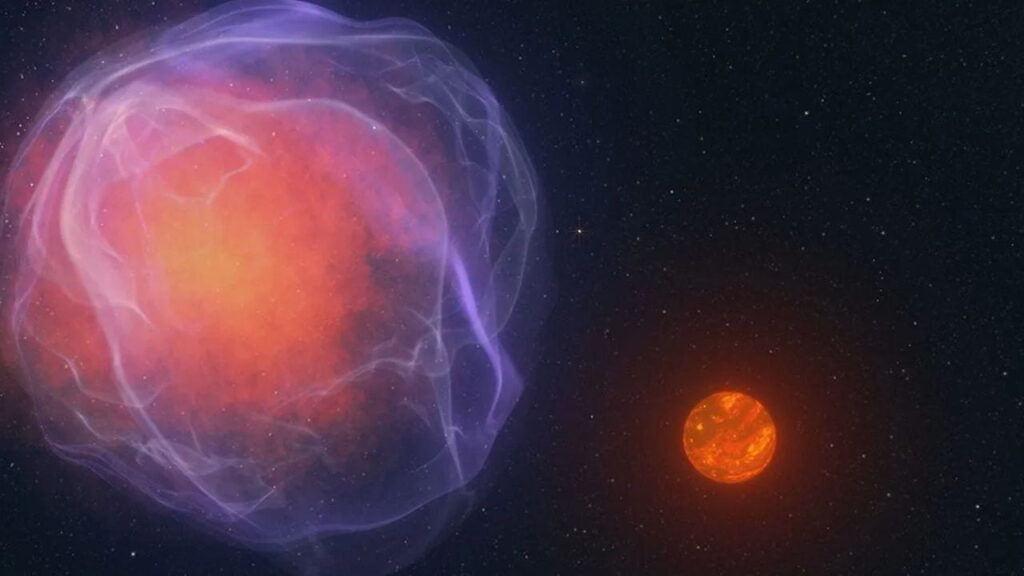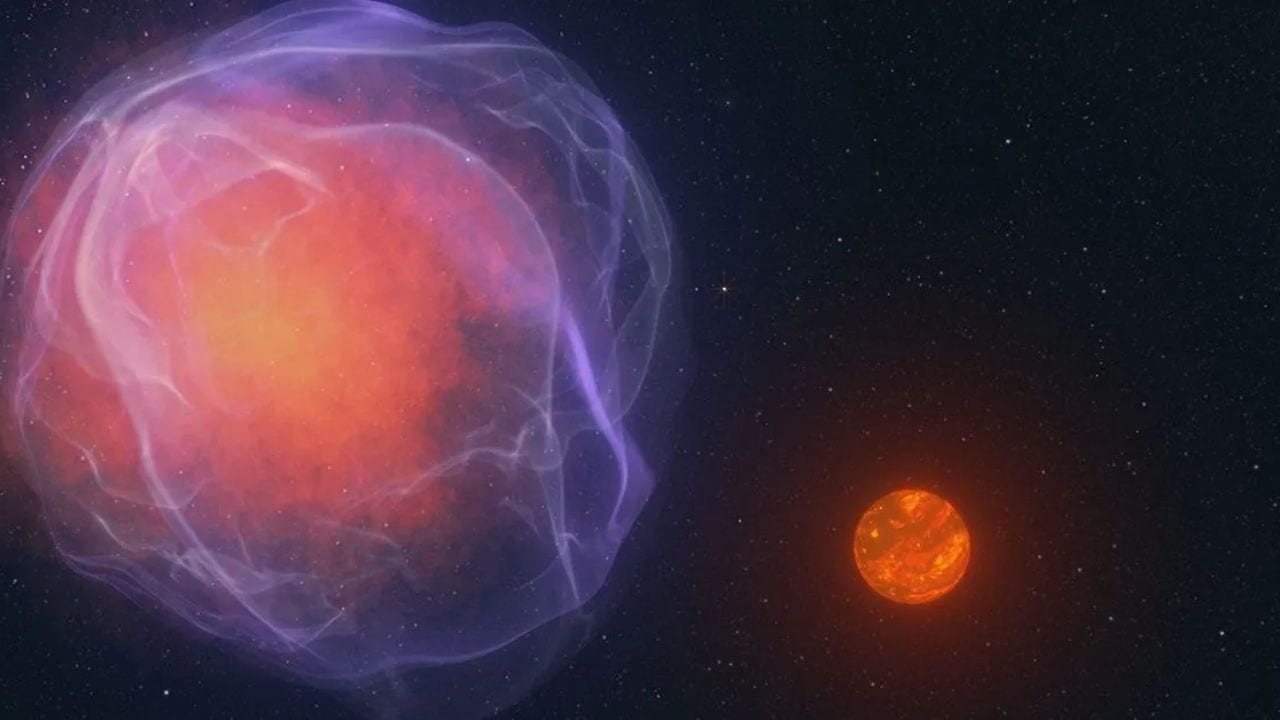NASA, citizen scientists, hypervelocity star, Milky Way, Backyard Worlds, CWISE J124909.08+362116.0, space discovery, brown dwarf, astronomy, intergalactic object, high-speed star, WISE mission
“Discover how NASA citizen scientists uncovered CWISE J124909.08+362116.0, a hypervelocity object moving at 1 million miles per hour, set to escape the Milky Way. Learn about the object’s unique characteristics and its implications for astrophysics.”

NASA Citizen Scientists Spot Object Moving 1 Million Miles Per Hour: A New Frontier in Astrophysics
In a remarkable discovery that underscores the power of citizen science, NASA’s Backyard Worlds: Planet 9 project has unveiled a celestial object traveling at an extraordinary speed of 1 million miles per hour. This discovery is not only significant because of its velocity but also due to the object’s unique characteristics, which challenge conventional understanding of stellar objects. The object, dubbed CWISE J124909.08+362116.0, is set to escape the Milky Way’s gravitational pull, making it the first such object of its kind found with a mass similar to or less than that of a small star.
The Discovery: A New Kind of Celestial Object
Most stars in our galaxy follow a relatively peaceful trajectory, orbiting the center of the Milky Way in a stable and predictable manner. However, CWISE J1249 is an exception. Discovered by citizen scientists Martin Kabatnik, Thomas P. Bickle, and Dan Caselden, this object is moving so rapidly that it is on course to leave the galaxy entirely. The discovery was made through NASA’s WISE (Wide-field Infrared Explorer) mission, which originally mapped the sky in infrared light from 2009 to 2011 and was later reactivated as NEOWISE in 2013.
The significance of this discovery lies not just in the object’s speed but also in its mass. CWISE J1249 could either be a low-mass star or a brown dwarf. Brown dwarfs are objects that are not massive enough to sustain hydrogen fusion in their cores, placing them in a category between gas giant planets and stars. While brown dwarfs themselves are not particularly rare, CWISE J1249 is unique in that it is the first known brown dwarf or low-mass star to be on a trajectory out of the Milky Way.
Citizen Scientists: The Unsung Heroes
The discovery of CWISE J1249 is a testament to the collaborative nature of modern science. The Backyard Worlds: Planet 9 project allows volunteers to sift through data from the WISE mission to identify potential celestial objects. In this case, the sharp eyes of Kabatnik, Bickle, and Caselden were instrumental in spotting the faint, fast-moving object. Their discovery was later confirmed through follow-up observations with several ground-based telescopes.
This discovery highlights the vital role that citizen scientists play in expanding our understanding of the universe. As Kabatnik, a citizen scientist from Nuremberg, Germany, noted, “I can’t describe the level of excitement. When I first saw how fast it was moving, I was convinced it must have been reported already.” The fact that such a significant discovery was made by individuals who are not professional astronomers underscores the democratization of science in the digital age.
The Mysterious Origin of CWISE J1249
One of the most intriguing aspects of CWISE J1249 is its origin and the reason for its extraordinary velocity. There are several hypotheses, but none have been definitively proven yet. One theory suggests that CWISE J1249 may have originated in a binary system with a white dwarf. In such a system, the white dwarf could have exploded as a supernova after pulling off too much material from its companion star, propelling CWISE J1249 out of the system at high speed.
Another possibility is that CWISE J1249 was ejected from a globular cluster, a tightly bound group of stars. A chance encounter with a pair of black holes within the cluster could have sent the object hurtling away at an incredible speed. According to Kyle Kremer, an incoming assistant professor in UC San Diego’s Department of Astronomy and Astrophysics, “When a star encounters a black hole binary, the complex dynamics of this three-body interaction can toss that star right out of the globular cluster.”
The unusual elemental composition of CWISE J1249 provides further clues about its origins. Observations made with the W. M. Keck Observatory in Maunakea, Hawaii, revealed that the object has much less iron and other metals than typical stars and brown dwarfs. This suggests that CWISE J1249 is quite old, possibly originating from one of the first generations of stars in the Milky Way.
Implications for Astrophysics
The discovery of CWISE J1249 has profound implications for our understanding of the Milky Way and the objects within it. The fact that such a low-mass object can achieve the velocity necessary to escape the galaxy’s gravitational pull challenges current models of stellar dynamics. It also raises questions about the frequency of such events and whether there may be other similar objects yet to be discovered.
Moreover, the study of CWISE J1249 could provide insights into the early history of the Milky Way. If the object is indeed from one of the first generations of stars, it could offer valuable information about the conditions in the galaxy billions of years ago. This could, in turn, help scientists refine their models of galactic evolution and the formation of stars and planetary systems.
The Power of Collaboration
The discovery of CWISE J1249 is not just a triumph of individual effort but also of collaboration across different levels of expertise. The Backyard Worlds: Planet 9 project brings together volunteers, professional astronomers, and students, creating a diverse team united by a common goal. Kabatnik, one of the citizen scientists, credits the success of the project to the collective effort of many individuals, including Melina Thévenot, who provided valuable insights through her blog on Astronomical Data Query Language, and Frank Kiwy, whose software was instrumental in the discovery.
The study of CWISE J1249, led by Adam Burgasser, a professor at the University of California, San Diego, includes co-authors Hunter Brooks and Austin Rothermich, both of whom began their astronomy careers as citizen scientists. This collaboration exemplifies the growing trend in science where the barriers between professional and amateur scientists are becoming increasingly blurred.
Future Prospects
The discovery of CWISE J1249 opens up exciting possibilities for future research. Scientists are keen to study the object in greater detail to better understand its composition, origin, and trajectory. Further observations could provide more clues about the processes that can accelerate such low-mass objects to hypervelocity and lead to their ejection from the galaxy.
Additionally, the success of the Backyard Worlds: Planet 9 project highlights the potential for similar citizen science initiatives in other areas of astronomy. As data from space missions continue to accumulate, the need for human eyes to help analyze and interpret this information will only grow. Projects like Backyard Worlds not only contribute to scientific discovery but also engage the public in the excitement of space exploration.
Conclusion
The discovery of CWISE J124909.08+362116.0 is a landmark achievement in the field of astrophysics, showcasing the power of citizen science and the importance of collaboration in modern research. This hypervelocity object, moving at an astonishing speed of 1 million miles per hour, challenges our understanding of stellar dynamics and offers new insights into the history and evolution of the Milky Way. As scientists continue to study this enigmatic object, they will undoubtedly uncover more secrets of the universe, further expanding our knowledge of the cosmos. The success of this discovery serves as a reminder that in the vast expanse of space, there is always something new and extraordinary waiting to be found.
Read More
- NASA Citizen Scientists Discover Hypervelocity Star Zooming Out of the Milky Way
- NASA Missy Elliott: Hip-Hop Song Beamed to Venus
- NASA’s Select Terrain Vehicle for Artemis Missions
- NASA Ends VIPER Project: A New Direction for Moon Exploration










